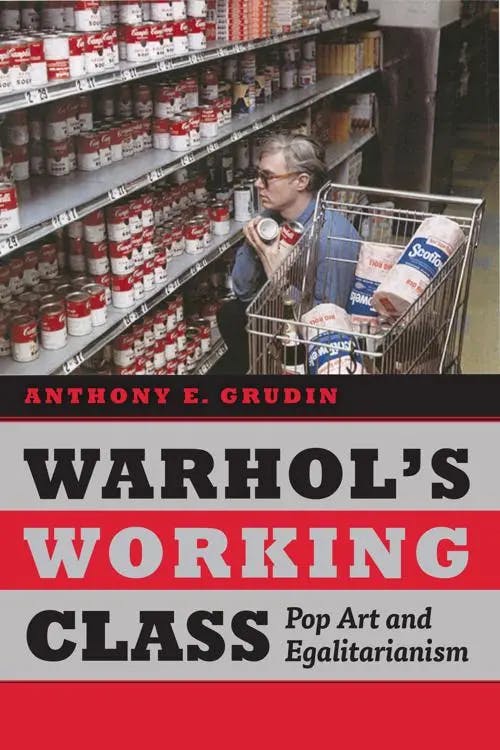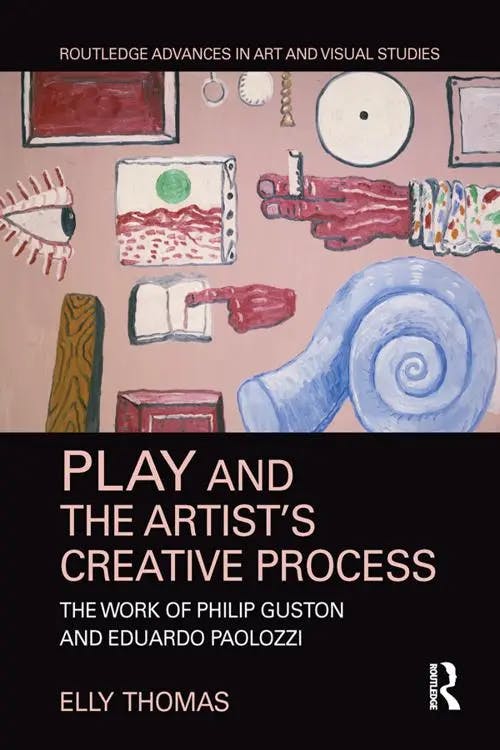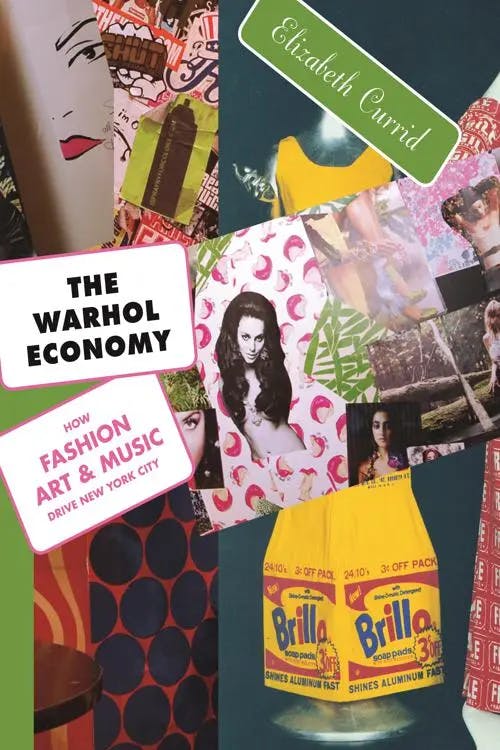What is Pop Art?
PhD, Media Arts (Royal Holloway, University of London)
Date Published: 14.03.2023,
Last Updated: 22.03.2023
Share this article
Defining Pop Art
Pop art is a movement that emerged in the 1950s and was popularized in the 1960s, belonging to what Peter Bürger calls the ‘neo-avant-garde’ (1984, 53). In both Britain and the United States, Pop art was a crucial cultural moment in defining a post-war aesthetic. Pop art marked the moment when the avant-garde moved away from what John Roberts calls ‘painterly modernism’ (2015). Where this ‘painterly modernism’ was guided by the attempt to jettison art from bourgeois and middle-class society, Pop art experimented with the ways in which art intersected with popular culture (2015). This change in the project of the avant-garde was a response to the social and economic state of a post-war world. In Britain, World War II had been costly, which led to instability and austerity in the latter half of the 1940s. The 1950s, however, saw prosperity on both sides of the Atlantic. Pop art was both an expression and a critique of the products of this prosperity.
When we think of Pop art, we think of bright, bold renderings of comic book images, cartoons, celebrities, and big brand household items. Roy Lichtenstein’s huge canvases of comic book style characters with yellow-blonde or blue-black hair, the texture of their skin made up of numerous dots, come to mind. Most famous, however, is the work of Andy Warhol, whose strange and brightly coloured portraits of Liz Taylor, Mao Zedong and Marilyn Monroe, as well as his prints of common branded food —Campbell’s Tomato Soup, for example — have come to define the Pop art movement.
Despite its recognizable aesthetic and universal appeal, debates surrounding the intentions, effects, and origins of Pop art have permeated studies of modern art. In Warhol’s Working Class, Anthony Grudin lays out these tensions, writing,
Pop’s critics have long disagreed about the attitudes pop demonstrated toward popular culture. Did these artists affirm “commercial imagery” or critique it — cynically or sincerely? Were they resurrecting Marcel Duchamp’s or Elsa von Freytag-Loringhoven’s ironic and sophisticated readymades, or searching out and celebrating the most exhilarating visual culture available? Could “vulgar” objects and images provide a challenge to artists, a new test of their abilities to convert the mundane into form and beauty? These questions led to innumerable arguments regarding pop’s political outlook, arguments that attempted to find an interpretive frame that would accommodate all of pop’s practitioners. (2017)
Anthony E. Grudin
Pop’s critics have long disagreed about the attitudes pop demonstrated toward popular culture. Did these artists affirm “commercial imagery” or critique it — cynically or sincerely? Were they resurrecting Marcel Duchamp’s or Elsa von Freytag-Loringhoven’s ironic and sophisticated readymades, or searching out and celebrating the most exhilarating visual culture available? Could “vulgar” objects and images provide a challenge to artists, a new test of their abilities to convert the mundane into form and beauty? These questions led to innumerable arguments regarding pop’s political outlook, arguments that attempted to find an interpretive frame that would accommodate all of pop’s practitioners. (2017)
The main questions that Pop art elicits are whether the imagery of mass-produced popular culture was an ally or an adversary to the art world and, furthermore, what role Pop art played in the relationship between the avant-garde and mainstream culture of capitalism.
British vs American Pop art
Although Pop art is commonly associated with American commercialization, its early manifestations can be found in Britain, starting with a collection of artists called the Independent Group. Working out of London in the early 1950s, the Independent Group was critical of art’s inaccessibility. What they learned at the Institute of Contemporary Arts, London, seemed to them elitist and elusive, without any relevance or bearing on everyday life. To make art more relevant and accessible, the Independent Group used images from American popular culture, with Eduardo Paolozzi creating collages from images of Mickey Mouse, tinned tuna, sleek cars, orange juice and glamorous celebrities cut from magazines from across the Atlantic. It is in one of these works that the word ‘Pop’ first made an appearance. It was the position of many members of the Independent Group that art should not break away from society, as many of the avant-gardists would suggest, but rather be at its centre as an active participant.
As Elly Thomas states in Play and the Artist’s Creative Process,
The members of the group shared an interest in popular culture such as advertising, science fiction, movies, magazine imagery and comics. As if in continuity with playground swaps and the sharing of comic books and magazines, Paolozzi and the fellow members of the group would meet to discuss and analyse mass culture. (2019)
Elly Thomas
The members of the group shared an interest in popular culture such as advertising, science fiction, movies, magazine imagery and comics. As if in continuity with playground swaps and the sharing of comic books and magazines, Paolozzi and the fellow members of the group would meet to discuss and analyse mass culture. (2019)
These activities suggested not a disgust with popular culture but a celebration of it. The Independent Group was a precursor to British Pop art, a movement that continued to play with the cultural imports of the United States. By adopting an aesthetic of prosperous commercialization from an outsider point of view, British Pop art encouraged sexual liberation, employed bold and accessible designs and, with a touch of irony, raised mundane, mass-produced images to a high-art status.
Pop art rose to prominence in the U.S in the 1960s. Up until that time, Abstract Expressionism was at the forefront of modern art in America, with artists like Jackson Pollock expressing the grief and anger of post-war America through loose and highly abstract splatters of paint on a canvas. Pollock claimed that ‘the modern artist is working with space and time, and expressing his feelings rather than illustrating’ (1999, 21). Pop art saw the pendulum of modern art swing. Instead of being guided by subjective emotion which produced highly abstract works, Pop art was more objective, using precise repetition of widely recognized and understood images. This shift partly aimed to retrieve art from the privacy of the artist and an understanding of art from elitist institutions, returning it to the everyday.
While early British Pop art looked upon the consumerist world of America from afar, speculating on the lifestyle and culture that this commercialization fostered, American Pop art was responding to and participating in that lifestyle and culture. While this resulted in similar aesthetics, British Pop art is often heralded as expressing the fun, the irony, and the depravity of big-picture consumerism, whereas Pop art in the U.S. dealt more with the aesthetic of the everyday, blurring the lines between art and commercialization.
Pop art, commercialization and the avant-garde
In Jackson Pollock, Claud Cernuschi posits that ‘the task of the avant-garde is to segregate art from the corrupting influence of popular taste and ensure high standards of quality’ (2021). Like most avant-garde art movements, Pop art represented a rebellious attitude towards popular art standards and the aesthetic and cultural acceptability the art world facilitated. However, we also understand Pop art to be an avant-garde movement largely made up of images taken from the commercial world. There is an inherent tension in Pop art between the avant-garde detachment of art from the commercial world, and the use of commercial imagery. The question that Pop art provokes is one that attends to the simultaneous criticism of popular artistic tastes and the use of pop culture aesthetic, advertising and mass-production.
When Grudin asks whether Pop artists were ‘resurrecting Marcel Duchamp’s or Elsa von Freytag-Loringhoven’s ironic and sophisticated readymades, or searching out and celebrating the most exhilarating visual culture available,’ he touches on the debated origins and intentions of Pop art (2017). Parallels are often drawn between Pop Art and Dada. Dada challenged the art world through ‘readymades’: mundane, mass-produced objects placed in a gallery setting. Dada and Pop art certainly share the ambition to return art to everyday life, blurring the lines between low and high-brow art. But was Pop art guided by the radical principles of the avant-garde, set out by movements like Dada, or inspired by the aesthetics of consumerism? Did Pop art mock the capitalism of the art institution or did it merely celebrate the popularity of commercial ‘visual culture’? Whether the former or latter — if they are even mutually exclusive — this question raises a defining paradox of the avant-garde: art becomes subsumed and capitalized on by the very institution it sought to challenge. Avant-garde artists challenge the expectations of art in order to engender social change, but this art gets picked up by the art institution and becomes popular and profitable. Regardless of its intention, Pop art provides an example of the way that art can belong to both the worlds of high art and commercialization, can be simultaneously avant-garde and popular.
Andy Warhol and Pop art
These questions regarding the avant-garde’s relationship to established institutions arose in part in response to Andy Warhol. Warhol’s name has become synonymous with the Pop art movement. His most famous works are made up of repeated images of Marilyn Monroe and Campbell Soup Cans, as well sculptural pieces of wooden dollar signs and stacked Brillo boxes. Not only did his art depict the mass-produced offerings of consumerist America, but his process also reflected this mass-production through the repetition of screen-printed images. Warhol’s Marilyn Monroe and Campbell Soup Can pieces exemplify this style, where the same image is repeated with different colours and levels of light exposure. These were often interpreted as a satire on the illusion of variety and choice presented to consumers, but garnered mixed reviews.
As Arthur Danto explains, in Andy Warhol, Warhol’s ‘art was typically interpreted by European intellectuals as critical both of American mass culture and of the products of American capitalism, like Campbell’s soup’ (2009). Danto goes on to describe the different reception of Warhol’s early work in America,
Seen as a critic of American culture, Warhol — and the Pop artists generally — were given considerable credit by Europeans, and were taken seriously by them as artists in a way that they were not, at first at least, by the American art world, which had finally begun to accept the fact that America had, for the first time in history, produced world class art through the paintings of the so-called New York school—the great Abstract Expressionist canvases produced during and after World War II. (2009)
Arthur C. Danto
Seen as a critic of American culture, Warhol — and the Pop artists generally — were given considerable credit by Europeans, and were taken seriously by them as artists in a way that they were not, at first at least, by the American art world, which had finally begun to accept the fact that America had, for the first time in history, produced world class art through the paintings of the so-called New York school—the great Abstract Expressionist canvases produced during and after World War II. (2009)
Warhol resisted pure abstraction and the expression of subjectivity and emotion in his work — a position that shocked the American art world — in favour of what critics thought to be ‘simpleminded pictures of soup cans or Donald Duck’ (2009). Danto explains that, at this time, ‘it was widely felt that important painting had to be difficult — but anyone in the culture could get what Pop art showed immediately. Whether the Europeans were right or not, that Pop art was critical of American culture, they at least felt that there was more to the new art than met the eye’ (2009).
Warhol at times seemed to confirm his satirical approach to commercialization, with ironic titles like ‘The American Dream’ and ‘Death in America’. But he also actively participated in this consumerist world as a commercial artist. In the 1950s, Warhol was a highly sought-after artist in the advertising world, working with huge fashion and music brands. This fascination with the commercial image culminated in 1985 in a series of works called ‘Ads Portfolio’. Ads Portfolio shows images of celebrities like James Dean and Judy Garland as well as brand logos like Chanel, Paramount and Volkswagen in Warhol’s iconic Pop style. This collection not only exhibited Warhol’s propensity to draw the attention of the viewer and express the ethos of a brand through bold colours and shapes, but it also showed the commodification of art itself with many of those prints being among the most valuable in the world.
Unlike many artists in history, Warhol garnered incredible recognition and financial success during his life. This was no doubt due to his exploration of the way that art and commercialization intersected.
Elizabeth Currid-Halkett describes this inThe Warhol Economy, writing,
In his work, Warhol translated commodities into art, whether soup cans or dollar bills. But he also understood the inverse: that art and culture could be translated into a commodity form — what he called “business art,” a central tenet to contemporary creative production. (2020)
Elizabeth Currid-Halkett
In his work, Warhol translated commodities into art, whether soup cans or dollar bills. But he also understood the inverse: that art and culture could be translated into a commodity form — what he called “business art,” a central tenet to contemporary creative production. (2020)
Whether Warhol, and Pop art at large, was enacting a facetious post-war capitalist critique or celebrating the aesthetic of the commercial world, his legacy is one that challenged the distinction between high and low culture and incited the expansion of art to the everyday.
Further Pop Art Reading & Resources on Perlego
Pop Art and Beyond by Mona Hadler and Kalliopi Minioudaki.
Pop Art and Popular Music by Melissa L. Mednicov.
American Pop Art in France by Liam Considine.
Welcome to the Silver Factory by Catherine O'Sullivan Shorr.
Like Andy Warhol by Jonathan Flatley.
Warhol in Ten Takes by Gary Needham and Glyn Davis.
Bibliography
Bürger, P. (1984) Theory of the Avant-Garde. Manchester UP.
Cernuschi, C. (2021) Jackson Pollock. 1st ed. Taylor and Francis.
Currid-Halkett, E. (2020) The Warhol Economy. Princeton UP.
Danto, A. (2009) Andy Warhol. Yale UP.
Grudin, A. (2017) Warhol’s Working Class. The University of Chicago Press.
Pollock, J., Varnedoe, K. (1999). Jackson Pollock: Interviews, Articles, and Reviews. United Kingdom: Museum of Modern Art.
Roberts, J. (2015) Revolutionary Time and the Avant-Garde. Verso.
Thomas, E. (2019) Play and the Artist’s Creative Process. 1st ed. Taylor and Francis.
PhD, Media Arts (Royal Holloway, University of London)
Aoiffe Walsh has a PhD in Media Arts from Royal Holloway, University of London. With a background in film studies and philosophy, her current research explores British literary modernism, with a particular focus on surrealism between the wars. She has lectured and published pieces on documentary and film theory, film history, genre studies and the avant-garde.




